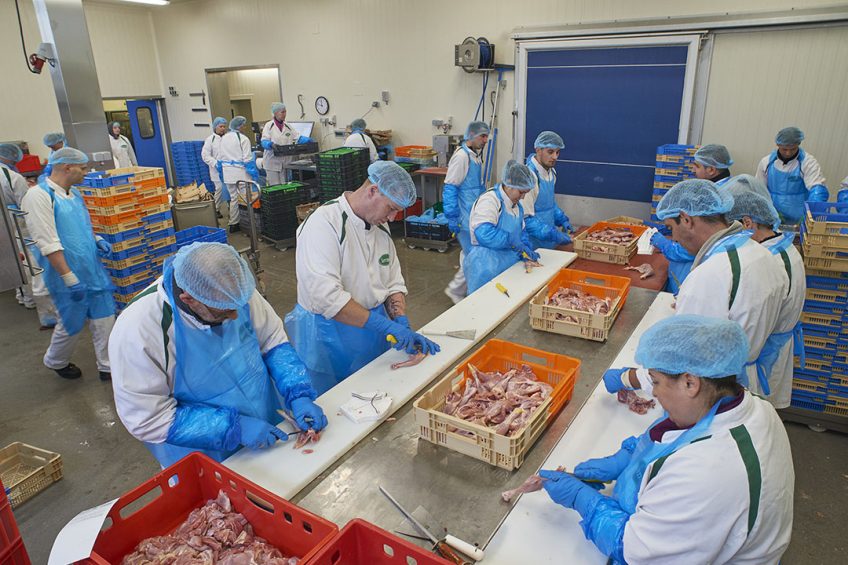Wood breast: Metabolic characteristics show susceptibility

New research indicates extensive metabolic differences in the pectoralis major muscle between 2 groups of broiler chickens and will help to identify metabolic features of susceptibility to muscle disorders and understanding the molecular mechanisms underlying wooden breast disease in modern broiler chickens.
In recent years, there has been an explosion of research into muscle abnormalities in commercial broiler chickens, wooden breast disease being the most economically significant one.
Physical effects of wooden breast
This disease causes prominent stiffness and discolouration in the pectoralis major muscle, occasionally the pectoralis minor muscle, and affected muscles become unfit for human consumption. In severely affected chickens, the entire pectoralis major muscle becomes affected as the chicken reaches market weight. In addition to economical aspects, there are animal welfare concerns due to the potential physical discomfort in severely affected chickens.
Ultrastructural effects of wooden breast
At ultrastructural levels, a series of anomalies have been observed in inter- and intracellular structures and organelles; at molecular levels, wooden breast disease is associated with profound alterations in metabolism, as well as increased oxidative stress, hypoxia and decreased glycogen content (glycogen is important in energy metabolism and influences the rate of postmortem pH drop, which impacts meat quality) in the pectoralis major muscle.
Check out the interactive Poultry Health Tool – with the latest insights on the 40+ most common poultry diseases.
High feed efficiency – more severe signs
Results of previous studies showed that chickens with high feed efficiency show higher levels and more severe signs of wooden breast disease than broilers with low feed efficiency. Oxidative stress and hypoxia are often associated with altered metabolism, and understanding the metabolic changes in high feed efficiency chickens may help explain why these chickens are more susceptible to wooden breast disease.
Metabolic differences between high and low efficiency
This study was conducted to characterise metabolic differences between high feed efficiency and low feed efficiency chickens to investigate why high feed efficient chickens are more susceptible to muscle abnormalities such as wooden breast disease. Gene expression profiles from chickens from a modern broiler population were used. Metabolism-associated differentially expressed genes involved in carbohydrate and lipid metabolism were identified and the glycogen content and the expression level of glycogen synthase in the pectoralis major muscle of both groups of chickens were measured.
The data indicate decreased glycolytic capacity, increased fatty acid uptake, mitochondrial oxidation of fatty acids, and several other metabolic alterations in the pectoralis major muscle of high feed efficiency chickens; the glycogen content of the pectoralis major muscle being significantly higher. Additionally, the pectoralis major muscle in high feed efficiency chickens exhibits transcriptional alterations indicative of oxidative stress and hypoxia, features that are also shared with wooden breast disease-affected muscles and thought to be primarily responsible for increased susceptibility to this disease.
Join 31,000+ subscribers
Subscribe to our newsletter to stay updated about all the need-to-know content in the poultry sector, three times a week. Beheer
Beheer








 WP Admin
WP Admin  Bewerk bericht
Bewerk bericht